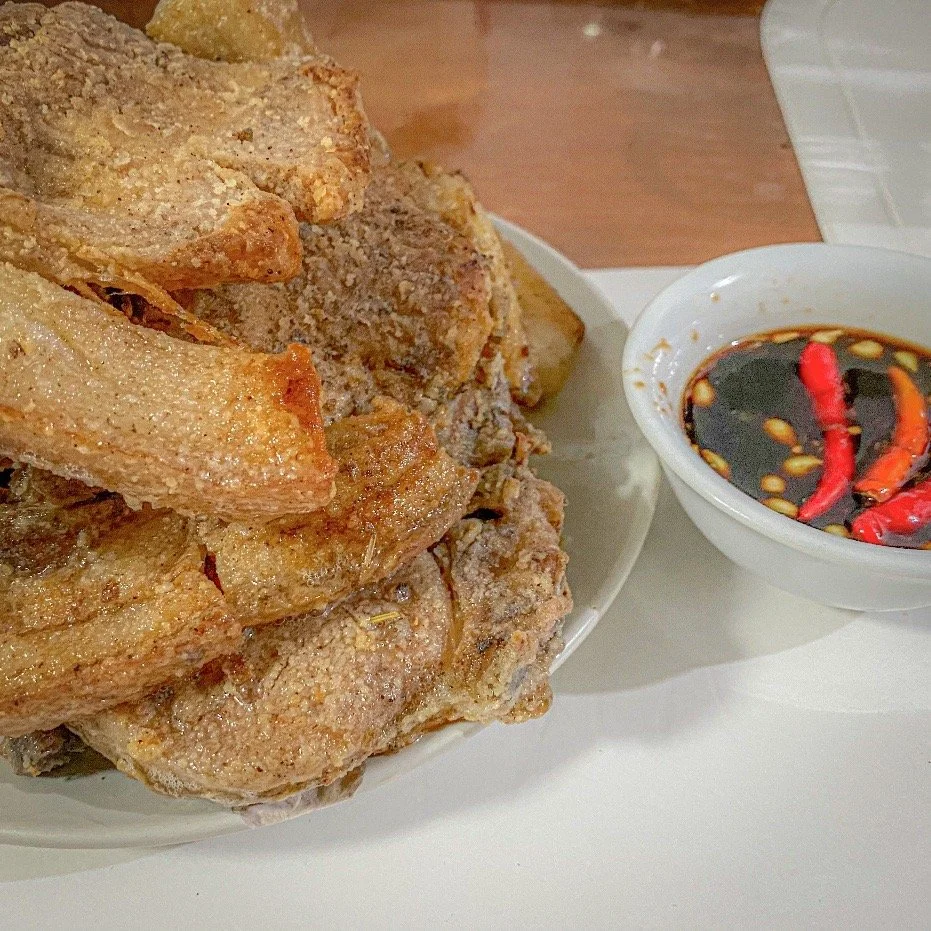Ilocano Bagnet: The Crispy Fried Pork Masterpiece
If there’s one dish that defines the Ilocano culinary tradition, it’s bagnet. Often hailed as the ultimate fried pork dish, bagnet is known for its ultra-crispy skin, tender meat, and savory flavor. While fried pork dishes can be found in many parts of the world, from chicharrón in Latin America to lechon kawali in other parts of the Philippines, bagnet stands out for its unique preparation, deep flavor, and satisfying crunch.
What Makes Bagnet Distinct?
At first glance, bagnet may seem similar to other fried pork dishes like lechon kawali, but it’s the meticulous cooking process and the crispiness of the skin that truly set it apart. The secret to a great bagnet lies in its double-frying technique. First, the pork belly is boiled to render the fat and soften the meat. Afterward, it’s air-dried to achieve that coveted crispy skin. Finally, it’s deep-fried to perfection, resulting in a crackly, golden exterior and juicy, tender meat on the inside.
This double-frying method not only gives bagnet its signature crunch but also ensures the skin is light, airy, and shatters when you bite into it—without becoming greasy or heavy. Unlike lechon kawali, which has a slightly softer skin, bagnet achieves a level of crispiness that’s unparalleled, making it one of the most satisfying pork dishes in the Philippines.
How It Compares to Other Fried Pork Dishes
Fried pork is a universal indulgence, but what makes bagnet different from other versions around the world?
1. Texture
The hallmark of bagnet is its incredibly crispy, crunchy texture. Compared to chicharrón from Spain or Latin America, which is usually fried pork skin, bagnet keeps the pork belly intact, meaning you get both the crunchy skin and the tender, juicy layers of fat and meat underneath. This contrast in texture—crispy on the outside and soft inside—is what makes it special.
2. Flavor
While chicharrón relies on just the pork skin for flavor, bagnet benefits from the natural richness of the pork belly. The meat is typically seasoned only with salt, letting the pork’s natural flavor shine through. The simplicity of the seasoning makes bagnet incredibly versatile—it can be eaten on its own, or paired with a range of condiments and side dishes.
3. Cooking Process
The meticulous boiling and air-drying steps distinguish bagnet from other fried pork. While other fried pork dishes might jump straight from the pot to the frying pan, bagnet undergoes a longer preparation process, ensuring the skin is perfectly crispy without burning or drying out the meat.
How to Best Enjoy Bagnet
Though bagnet is delicious on its own, there are many ways to enhance your bagnet experience:
1. Pair It with Vinegar Dips
A tangy vinegar dip is the perfect complement to the rich, fatty goodness of bagnet. The acidity cuts through the pork’s richness, balancing the flavors and giving each bite a refreshing pop. In Ilocos, it’s common to pair bagnet with sukang Iloko (Ilocos vinegar), a local vinegar with a robust, slightly fruity flavor. For those who love spice, adding chili to the vinegar takes the experience up a notch.
2. Serve It with Pinakbet
One of the most popular ways to enjoy bagnet in Ilocos is with pinakbet, a vegetable dish made with a variety of local produce like bitter melon, eggplant, and long beans, all stewed in fermented shrimp paste (bagoong). The savory, earthy flavors of pinakbet complement the rich, crunchy pork, making it a satisfying meal. The vegetables’ slight bitterness contrasts with the fatty pork, creating a delicious balance.
3. Enjoy It in a Rice Meal
There’s nothing quite like pairing crispy bagnet with a hot bowl of rice. The simplicity of steamed rice lets the flavors of the pork shine through, and it absorbs the rich juices and fat that come from the crispy skin and tender meat. For an extra kick, you can add bagnet to a classic Filipino rice dish like sinangag (garlic-fried rice).
4. Make It a Topping
A more modern twist on bagnet is using it as a topping for other dishes. It’s becoming popular to add crispy bagnet pieces on top of salads, noodles, or even pasta, where its crunch and flavor add a unique Filipino touch to familiar dishes.
A Cultural and Culinary Treasure
Ilocano bagnet is more than just a fried pork dish; it’s a culinary tradition that reflects the love for simplicity, technique, and bold flavors in Filipino cooking. It’s the kind of dish that brings families together, whether during celebrations or even simple weekend lunches. With every bite of bagnet, you’re tasting the careful preparation and the essence of Ilocos’ rich food culture.
Conclusion
Bagnet is truly a standout dish in the world of fried pork, thanks to its unforgettable crispy texture and deep, rich flavor. Whether you enjoy it on its own, paired with vinegar, or as part of a full Filipino meal, bagnet is a culinary experience that shouldn’t be missed. Its perfect balance of textures and flavors makes it one of the Philippines’ most beloved pork dishes, and a must-try for any food lover.
